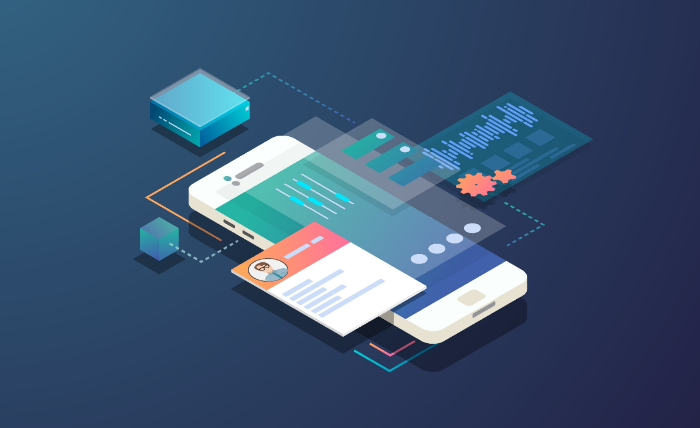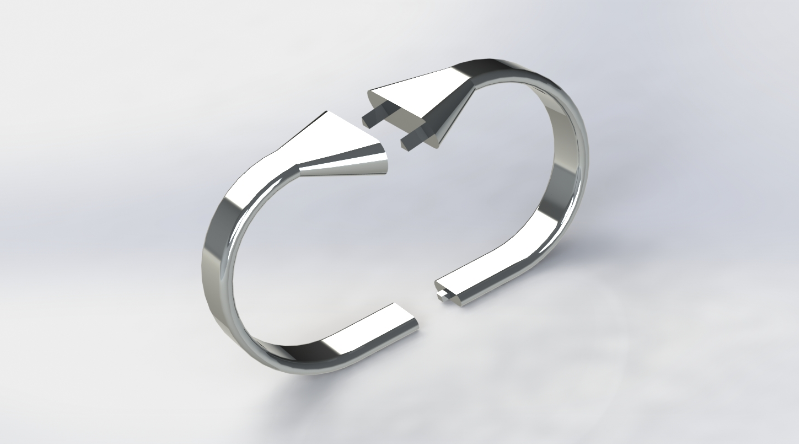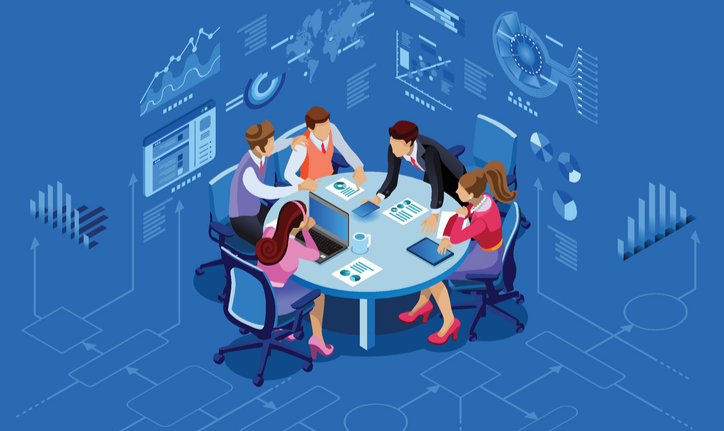Product design is an ever-changing part of global business. Over the years, products have changed their looks to meet modern design trends and to take advantage of new technologies. We’ve gone from clunky old dial-up phones to small cellphones that can fit in your pocket, all the way back to big phones you can play games on.
Even if your product isn’t a slick piece of technology, you still need to pay attention to design trends to ensure your new product has the best chance of success. Product design services are up to date on all of the modern trends. To keep yourself up to date, here are some of today’s latest design trends and what they might mean for your business.
UX Should Be Your Main Focus
Thanks to the internet, customers can shop in stores all around the world. Thanks to somewhat uncertain economic times, they are also a lot more choosy about what they buy. When a consumer is looking at a product, they often read reviews that speak to other people’s experience, and that frequently means how easy it was to use the product.
If your product is hard to use, chances are it will be dropped in favor of products that have a better design. This isn’t limited to just things like navigation. Tools such as voice control, augmented reality, and personalized experiences all help to make a product more desirable.
Customers love products that make repetitive tasks easier, helps them streamline their daily life, and gives them a little more independence in the creation process. Creating products that save time or are more convenient are all great options for 2021.

Examples of better user experience are all over, but one of the best examples is a new app called My Car Parking.
Everyone has experienced the frustration of driving around a parking lot for hours looking for a space. Sometimes this is unavoidable, but with My Car Parking, you can book a parking spot at a paid parking lot in advance, drive there, and simply pull in.
This overwhelmingly popular app has advanced UX and solves a real problem for many users. With just the click of a button, you can easily reduce a major frustration in your life.
Chefbox is another great example of UX that has taken off recently. It focuses on the frustration of budding chefs who want to eat healthily but don’t know how to prepare home-cooked meals or have the time. It combines a box with all the ingredients you need including instructions to prepare the meal.
The user-friendly interface makes it easy for people who may not have learned how to prepare a fresh meal from home without all the hassle.
Simplistic Design Is In
Bold colors and strong lines were a favorite used by packaging design companies and put into products themselves just a few short years ago. In recent years, however, consumers have switched from paying little attention to what goes into their products to caring very much where a product comes from.
A desire for products with simple ingredients, fewer chemicals, and products that are both environmentally friendly and humane has led to a shift in design. This has also led to packaging design with lighter coloring, simpler designs, and premium materials rather than the busy colors and bold designs of yesteryear.
RELATED: How to Design Environmentally Friendly Products
This simpler packaging helps tell the story of what customers can expect from the item inside the package, a critical step in product design. Ensure your products fit in with consumer demands, make sure they’re clean and green, and keep your packaging simple.
Modular Design
You may not have heard of the term modular design, but you’ve definitely seen it in use. In fact, you’re probably reading this on a prime example of modular design right now – a computer, phone, or tablet. Modular design is a design philosophy involving a system made of smaller pieces. The major benefit of modular design is that it’s heavily customizable.

In the case of a computer, if you’re a gamer, you can beef up the processor and video cards for a better experience. Or if you’re a 3D artist, you can add an extra monitor to make working easier.
Modular design is another way of handling the desire consumers have for customized products. By making sure your product can be augmented in different ways with other modules, you can not only increase your sales through these modules, but you can also make it more customizable for the user.
Consumers Are Back in Touch with Their Emotions
We love the clean and modern look, but those sterile designs that don’t say much about the personality of the people who own it are losing their grip on the marketplace. Consumers are looking for products that have a little bit more emotion behind them and show that the product is part of their personal story.
You can see examples of this everywhere, with big companies adding a touch of playfulness to almost everything. United Airways, for example, lightened up and included several shades of blue and gray in their uniforms. Lyft added more colors to its design that was once strictly white, black, and pink.
Don’t be afraid to be a little more playful with your designs this year. Add a bit more warmth and emotion to your design.
Minimalism Is Making Product Design More Competitive
Consumers are tired of plain old stuff. A combination of the difficult economic times and the overwhelming depression that huge volumes of clutter can create has made people more thoughtful about what they buy. While people are still purchasing new things, they are much more thoughtful about what those things are.
Evidence of this can be seen in new Netflix TV shows like Tidying Up, where people are encouraged only to keep items that “spark joy.” The popularity of these shows is evidence of how much this new trend has taken hold.

Because of these trends, products have to really stand out before customers are willing to take a chance on them. They need to solve a real problem in their lives, be made of a much higher quality than the item they already have, or fit better into their current lifestyle.
To stay competitive, expect to step it up a notch in your design. Make sure that your product is well researched and has what it takes to deserve a place of honor in homes around the world.
Expect More Team Work during the Creation Process
The end product isn’t the only part of the design process that is seeing big changes. You can expect a lot more help along the way too. The data involving the design process is more likely to be shared with other parts of the team not normally associated with the design itself. This includes marketing, who may review the information created to help design marketing materials more appropriate for the product.
New technologies are also being brought in to help with finishing products. Augmented reality is becoming a popular way to review products before signing off on the final product, and data from previous products may be looked at by almost everyone to see where improvements can be made.

Freelance engineers and manufacturers may also be spending more time together to save time during the production process. Many manufacturers lose valuable time they could be using on the preproduction process waiting for engineering to finish, and engineering can sometimes make small changes late in the process that can set manufacturers way back.
By learning to work together, the process can be streamlined so that everybody benefits. Expect to communicate more with manufacturers and other team members to see the product design through to completion faster.
Cognitive Sustainability Is Being Talked About
Until recently, the growth of technology has been virtually unchecked against what our minds can handle. Now the dizzying array of available apps, endless choices, and software that gets ever better at making us constantly engage is receiving push back.
Just as end users are questioning whether they need all of the products that have been pushed at them, they are also questioning whether they need another app or the latest gadget. Technology is useful, but it also constantly interrupts our mental flow.
Technology never lets us rest. From the moment our alarm clock beeps us awake to the blue light from the cellphone that stops us from going to bed at night, technology is stimulating our brains and making it harder and harder to focus.
Combine that with the discussion being opened about dark UX, where users are tricked into doing something they don’t want to do, and people are beginning to avoid products they once loved. This can be as minor as making it difficult to unsubscribe to a mailing list to as major as tricking people into paying for apps and subscriptions without them knowing. Even salt shakers can be affected by this type of design practice.

Thankfully, the answer to these problems is what’s trending. A new movement for apps, products, and tech that promotes calmness and focus has started, and these products are very popular. Transparency is key nowadays.
Nobody likes to be tricked into doing something they didn’t intend to do, nor do they like the twitchy, uncomfortable feeling that too much tech can cause. Apps that help you relax, such as ones that guide you through the process of meditation, or products with natural colors that help ease sleep, are the hottest new products to become available.
Thinking about the ethics of your product isn’t always the first thing that comes to mind when designing, but it should be your main focus for 2021.
3D Printing Is Taking over the World
There is something exciting about the idea of finding a product you really need or want, customizing it to fit your individual needs, and having it 3D printed right out of your home. (Or have a 3D printing service handle it for you)
While we’re still a long way away from every home having a 3D printer, the ability of this versatile machine is becoming more important than ever. 3D printing is used in everything from the medical world, creating artificial limbs, to huge architectural achievements like building whole bridges.
3D printing will be a huge part of 2021, with more practical applications being found on a daily basis. Creating 3D printable products or finding ways to make 3D printing more usable in your manufacturing process may help create a buzz that will get your product design more attention.
Think Green
Consumers want sustainability in every part of their lives. That means not only products that will add value to their lives and give them many years of useful life, but something that won’t have a big impact on the environment.
Today’s talk about global warming, the fact that our trash never really goes away, and the idea that we’re all responsible for this planet has deeply touched consumers. Being more responsible about product packaging isn’t the only way consumers are looking at how their products are made.
Things we might not always think of, like what kind of energy runs the manufacturing facility or how recyclable the end product is are big considerations for customers.

Whether or not the products were made using fair trade practice is another big consideration, as well as whether any animals used in food products were treated ethically. Today’s customer wants cage-free eggs, grass-fed beef, and milk from cows who are treated well.
A few years ago, little thought was given to what happened to a product when we were done with it or what happened to the packaging after the product has been opened, but these things are sharply in focus today.
Product design should be focused on making products that have as little environmental impact as possible. Using recycled or compostable materials in your design is one great example of how green products can be made and they’re very popular with consumers right now.
Good examples of this in everyday products include packaging made of bacteria and yeast that looks like plastic but decomposes easily, and furniture made out of tealights and seaweed. These unusual materials have impressed potential customers and also generated a buzz for their business.
Forward-thinking designers should look at using recycled materials in new ways for their products. Not only will you save money on not having to use new materials, but you will gain the interest of today’s more selective consumer.
Cad Crowd Has Experts in Product Design at Your Fingertips
2021 will be an interesting year for product design. How consumers think about the products they choose to use is changing. Lighter colors, more personable products, customization, and sustainability are all important factors that should be taken into consideration this year.
If you’re looking for an edge in 2021, these trends are what you should be putting your focus into. Consumers are eager for products that fit their new ideals, and these are all great ways to focus your attention for the coming year.
At Cad Crowd, we can connect you with product design experts who are up to date with all the modern trends. Whether you’re looking to design a new dog toy or create product packaging for a bag of chips, we can help. Contact us today for a free quote!
